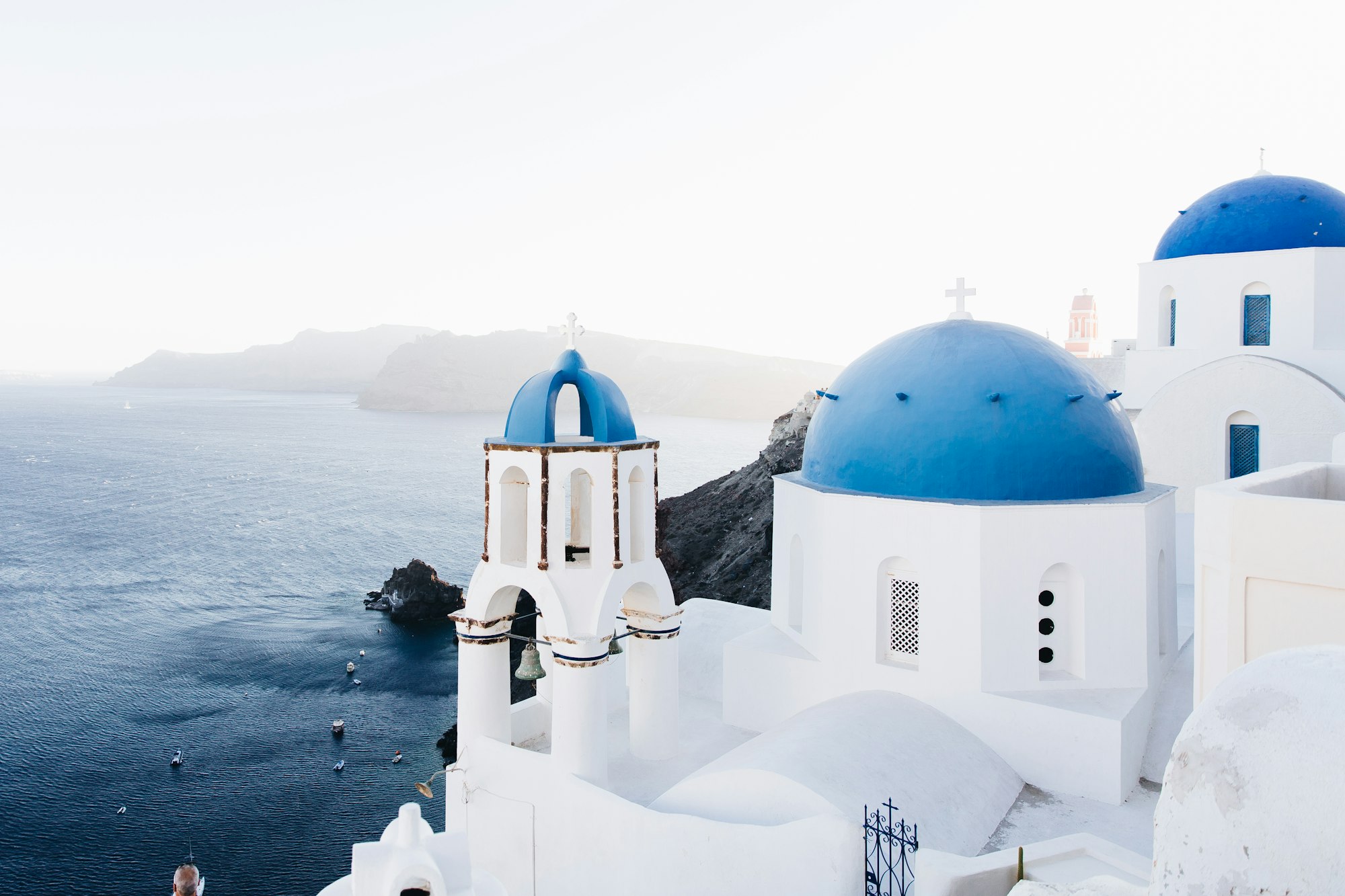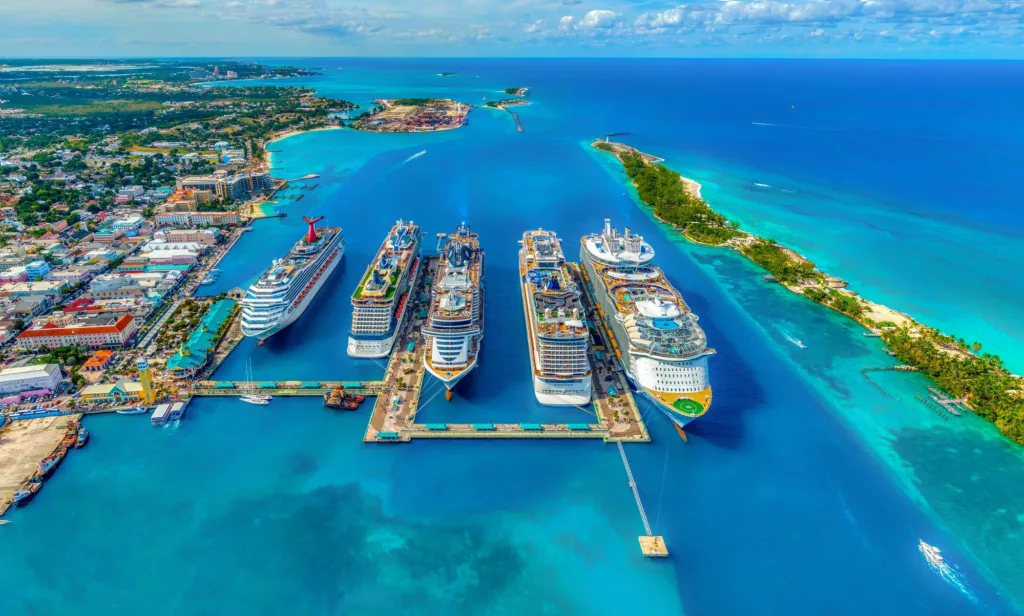The digital nomad lifestyle is getting popular, and many countries are embracing it by offering digital nomad visas.
There’s a right reason to do so. In the U.S. alone, the number of digital nomads has more than doubled between 2019 and 2022 — from 7.3 million in 2019 to 16.9 million in 2022.
Some even say there’d be 1 billion digital nomads roaming the earth by 2035.
A digital nomad visa makes it possible to travel in a country and stay here longer time — more than tourist visa permits.
If you are a traveler who is self-employed, then it makes sense to opt for the digital nomad visa while traveling. It also makes sense to understand it.
What is a digital nomad visa?
A digital nomad visa is a temporary stay permit — up to one year — that travelers can utilize to stay and work in a country. This visa is granted to self-employed professionals who work online, independently, or for companies outside their destination country.
The process of obtaining a digital nomad visa can be similar to that of a tourist visa, but here is where it gets interesting: tourist visas are issued for a short period, whereas digital nomad visas allow you to stay for a longer time — a great way to fully immerse yourself in a destination and live the nomad life.
Digital nomads also don’t hinder the local workforce as they cannot join it — they are not allowed to take a local job and have to work online for a company or employer outside.
In an ad-hoc query, the European Union has stated that a digital nomad “has no access to labour market.”
Why is the digital nomad trend on the rise?
There’s been a significant change in how businesses operate after the COVID-19 pandemic.
Researchers at Ladder, a company connective qualified professionals and hiring team, found that remote work opportunities have risen from under 4% of high-paying jobs before the pandemic to around 9% at the end of 2020.
In 2022, this number leaped to 15%. And now, they believe that the work-from-home or work remotely model is here to stay.
A screenshot from Google Trends shows the ‘interest over time’ for the term’ digital nomad.’

“This change in working arrangements is impossible to overhype,” Ladders’ CEO Marc Cenedella said in a release announcing the study. “As big as it is, it’s even bigger than people think.”
Cenedella even called it the largest social change the U.S. has seen since the second world war.
“Hiring practices typically move at a glacial pace, but the pandemic turned up the heat so we’re seeing a rapid flood of change in this space,” he added.
New travelers visiting a country and staying for some time also contribute to tourism economies, which many countries have realized post-pandemic amid mounting loss due to sluggish tourism.
The popularity of traveling as an activity and the post-pandemic-induced workforce restructuring has seen more skilled professionals drawn towards this opportunity — something that countries have supplemented with digital nomad visas.
Also read: Best Digital Nomad Jobs To Consider in 2022
Digital nomads vs. remote workers
Understanding what a digital nomad is can often be mixed up with remote workers — two similar terms that could easily be passed around. But they are not the same.
While all digital nomads are remote workers, all remote workers cannot be digital nomads, as remote working contracts — even though not on site — can be tied to an area or country of residence.
You cannot be a digital nomad if you are working from home and not going to your office — something that’s been happening lately due to the forced change in how people work.
The essence of being a digital nomad is traveling continuously and not letting your work hinder traveling prospects.
The sudden change in work habits only ushered its adaption. Books such as “The Four Hour Work Week” by Timothy Ferris only popularized this concept, but that was before COVID-19. Others followed; even fictitious accounts made it to the shelves.
Another thing to note is that you’d still not be a digital nomad if you are working on-site in a country outside one of your permanent residence.
Advantages and disadvantages of digital nomad visas
Despite its unique offering and many benefits, a digital nomad visa can carry certain disadvantages. Knowing this is crucial before making a significant career change or deciding which visa to apply for.
Advantages of digital nomad visas
If you are a self-employed professional who is tired of applying for tourist visas — especially if you are not from North America, Europe, or some other countries that have a tourism-friendly passport, then getting a digital nomad visa can ease the pain and let you stay in a country for a more extended period — often up to one year, which you can even renew upon expiration.
Traveling is one side of being a digital nomad, and working is another. Unlike traveling on a tourist visa, you also travel here as a worker. The destinations you choose could have sound internet infrastructure, and if you have excellent work equipment — like a great laptop — you are good to go.
If you are good at balancing life and work and are eager to adopt the digital nomad lifestyle, then this visa should be your go-to choice for traveling, even to the point of becoming your lifestyle.
Staying at a destination for a more extended period — up to one year — can also be an excellent opportunity to make friends, immerse yourself in the local culture, and even learn a bit of the local language.
According to FSI, you can achieve basic fluency in easy languages by spending 10 hours a day for 48 days. For part-time learners, this could be 480 days of learning, two hours per day — not bad if you stay in a country for up to one year. Not the wrong choice for a language enthusiast!
Some destinations also need more time. For instance, you cannot experience South Asia entirely in just a month. Getting a digital nomad visa could be an excuse to stay longer at your next favorite destination.
Disadvantages of digital nomad visas
While they might not be enough to hold you back, certain disadvantages come with this visa. The application process is, well, still a process. You still need to apply for the visa and even schedule an interview at the embassy. There might be even more scrutiny on granting a digital nomad visa as it’s given out for longer periods.
If you are a self-employed individual who makes a living with multiple clients, then it can be hard to accumulate income reports and guarantees, and that’s important for acquiring most digital nomad visas.
Digital nomad visas might also take a longer period to process. Another thing about them is that not everybody can apply for them. There’s a specific income threshold for digital nomad visas, and it’s not something you can always get to with a few part-time clients. There’s little scope for getting a digital nomad visa if you cannot prove the numbers.
Exhaustion by traveling and chances of contracting infections can also increase; researchers have found a link between frequent travelers and the spread of epidemics.
Traveling frequently can also have a lasting impact on relationships, which you might want to think about before embarking on a journey that could see you being out of coverage and spending less time in person with your loved ones.
Countries offering digital nomad visas
Many countries offer digital nomad and remote work visas that permit individuals to apply for themselves and dependents. Here’s an updated list:
1. Georgia

Georgia may not be Europe’s most popular destination, but it offers exciting things.
Its capital Tbilisi is out of a fairytale, with beautiful Caucasus mountains that let the tourists hike and ski. Besides, it’s famous for its savory food and an antique culture of wine.
The digital nomads can live with their families to work in the former Soviet state for one year. Here, a digital nomadic visa is available for citizens of up to 95 countries.
To enroll in the ‘Remotely from Georgia’ program, applicants must submit an online application form and some credentials for financial proof for min $2,000 per month. Interestingly, it’s free, and you can also register a business there.
2. Croatia

A diverse nation with a stunning coastline and various islands come together in Croatia. Nomads can stay with their close relatives for up to one year.
However, it seems to be a low-cost option, between $85 to $140, for people to live and work remotely in Europe.
Croatia’s ‘Temporary Stay for Digital Nomads’ program does not fall into the visa category, as it gives just a temporary residency permit.
Moreover, you must declare about $2,400 a month or $29,790 per annum income proof. So, if you want to move here, you can apply in Croatia or at Croatian consulates and embassies.
3. The Czech Republic

Czech Republic’s capital city, Prague, has recently become a popular travel destination. Czechia provided a freelancer visa for a while, called the Zivno. However, to avail of this, you must have a trade license. Therefore, it’s a bit complicated.
This visa (part of the long-term visa series) permits individuals to work for one year and can be extended. Although, the limited list of trades makes it harder among other European visas. But it’s free of cost program with some tax of about $75 per month.
4. Estonia

Estonia opened its doors to digital nomads by offering the ‘e-Residency program.’ It has offered nomadic visas for the past few years to assist entrepreneurs worldwide who run their EU-based businesses in a digital environment. This is a one-year Digital Nomad and Freelancer Visa that will allow you to stay in this country to work remotely.
Its visa costs about $85 for a short stay and $110 for a long stay. You also have to mention your income proof of $3,780.
Estonia’s excellent internet connectivity and business environment make it a great destination for digital nomads.
Read more about Estonia’s digital nomad visa.
5. Iceland

Iceland is well-known for its stunning landscapes. It offers a digital nomad visa called the ‘Long-term visa for remote work’.
Although it will be valid for just six months, if you stay in Schengen or nearby areas, the validity will be reduced to just three months.
Iceland’s digital nomad visa can be expensive. Applicants must prove sufficient income; about $7,000 for a single candidate and $10,500 for a candidate plus dependant.
Read more about Iceland’s digital nomad visa.
6. Germany

Germany is the hub of industries. It is also popular with expats and freelancers. Germany’s visa for remote workers is known as “Aufenthaltserlaubnis für selbständige Tätigkeit” (or ‘Residence permit for the purpose of self-employment’). The country offers residency permits for over three years to freelancers and self-employees.
Bureaucracy might be a hurdle, as the application process might last up to four months.
Applicants must submit their visa application to the German embassy or any consulate, pay the application fee, and show proof of sustainability along with a local address. Some other documents include photocopies of credentials with a cover letter, passport, two biometric photographs, and a portfolio of your freelance work.
Read more about Germany’s digital nomad visa.
7. Norway

Norway is one of the world’s richest countries, blessed with oil and a massive sovereign wealth fund. Being a dynamic, progressive, and wealthy nation, Norwegians offer an excellent opportunity for digital nomad individuals who want to work in a remote environment outside their own countries.
Here, you can apply for a 2-year ‘Residence permit for skilled workers.’ However, this is a costly place to stay and work. So, the digital nomad visa will also be expensive at about $650. Moreover, you have to declare $38,500 along with the accommodation proof.
Read more about Norway’s digital nomad visa.
8. Portugal

Portugal is a land of eye-catching sights. Lisbon, Porto, and the Algarve beach add to the charm and leisure of the land — you’d know what we are talking about when you experience it there or have been there.
Portugal’s digital nomad visa (or Temporary Stay Visa) valid for 12 months. But it can renew for up to 5 years. And after completing these five years, you can choose permanent residency here or go with the previous visa requirements.
You must pay $90 for the visa and $77 for a resident permit fee. Moreover, you must show $3000 per month as income proof, which can come from various sources.
Read more about Portugal’s digital nomad visa.
9. Spain

Spain is a hotspot due to its low cost, beaches, mountains, and cities full of life, including Barcelona, now considered a digital and tech growth hub.
Its digital nomad visa (for international teleworkers), launched under the Start-up Act, is valid for one year and extendable for another five. You must have a minimum monthly income of about $2,520 (plus extra for each additional family member).
10. Malta

Malta is a tiny European island with 300+ sunny days in a year. It’s offering of a digital nomad visa — ‘the nomad residency permit’ — is attempting to get more visitors and add to its economy.
This visa program is mainly for non-Europeans. It will be valid for one year and can be renewed if the conditions are met.
You must pay about $323, including family, to apply for this visa. You must also show your rental contract or property purchase and $2,920 per month as income proof.
Read more about Malta’s digital nomad visa.
11. Greece

From culture to food, history to sightseeing, and sun-kissed beaches to plenty of islands, Greece is a hub for many travelers. The internet is good, and the food’s not bad — generic descriptions, but you could live in the cities of Greece.
Greece offers two programs for digital nomads: an Income Tax Reduction (for EU/EEA and Greek nationals) and Greece Digital Nomad (GDN) Visa for non-EU/EEA citizens (no online applications, you have to go to a consulate in person).
Under the Tax reduction scheme, applicants must convert their tax residence to Greece and commit to staying in the country for at least two years, for which they will receive a 50% tax reduction on their income.
The digital nomad visa is valid for one year but can be extended up to three years later.
You need to pay $80 to apply for the GDN visa and declare your income — $3,800 per month along with 20% for spouse/partner and 15% for each child (if you have one).
12. Romania

Romania is well-known for its fast internet — great if you want to check and reply to those emails on a cafe’s WiFi connection. It has also offered the Digital Nomad Visa with a validity of nine months (renewable).
EU/EAA citizens would find entering more beneficial via a Registration Certificate (or Certificat de Inregistrare), valid for five years (book an appointment here).
Non-EU/EAA citizens would have to enter the country on a long-stay visa (marked D) which is valid for three months (apply here), after which you must apply for the residence permit, which would give you another six months (which can be renewed later).
From the initial stage, this visa was thought to be applicable for the low-income for about $1,200 a month. But now, it requires $4,000 per month to declare income proof.
13. Hungary

Hungary introduced its digital nomad visa in early 2022, called the White Card. This residency permit allows people to live and work in Hungary legally.
Hungary requires applicants to show an income proof of $2,160 per month over the previous six months.
The visa application costs about $120, is valid for one year, and can be renewed only once.
14. Cyprus

Cyprus is another not-so-expensive European country to offer the digital nomad visa.
The Cyprus Digital Nomad Visa allows applicants to stay and work remotely in Cyprus for one year and can be extended for another.
The applicants interested in this visa must show an income proof of $3,780/month after taxes. Cyprus’ authorities also need a police clearance certificate and private medical insurance from your country of residence.
15. Latvia

Latvia’s digital nomad visa is valid for one year, but the renewal option for another year is also available, so that’s excellent new
s for those who take a liking to this place which is a great destination all year around.
But there is a catch — one you got to watch out for before mentally preparing yourself for the trip: This visa is only available for foreigners working for an employer or business approved or registered in an OECD (Organization for Economic Co-operation and Development) country.
On the income front, you must declare that you are making two-and-a-half times the average Latvia average salary ($3,100 per month).
Latvia only accepts physical applications.
16. Albania

The Albanian government approved a new law that simplifies the application process for residency in the country in early 2022.
Its new residency program, the UNIQUE Permit, is aimed to attract pensioners, digital nomads, remorse workers, and those willing to buy property in the state.
The permit is valid for one year (extendable up to five). Applicants must earn at least $310/month and deposit about $2,900 in an Albanian bank account. They must also prove employment (existing contract), accommodation details, a clean criminal record, and health insurance.
Applicants for the UNIQUE permit have to obtain the Type D visa during applicaiton. Applications are online.
17. Armenia

Armenia is a country located in the mountainous Caucasus region between Asia and Europe but is culturally, historically, and politically considered to be part of Europe (Armenia-EU Comprehensive and Enhanced Partnership Agreement took effect on 1 March 2021)
Armenia’s Temporary Residence Permit is valid for one year (renewable for one more), after which one can apply for the Permanent Residence Permit (valid for five years). The program is open for foreign/Armenian nationals with a work permit (Armenian nationals) or a registered business in the country (digital nomads can easily set up a business and work as freelancers for clients worldwide).
The Temporary Resident card fee is about $275 ($220 for US citizens). It is also applicable for additional dependables of cardholders.
18. Barbados

This Caribbean nation launched its digital nomad program in June 2020, targeting freelancers, remote workers, and foreign business owners.
Barbados’ Welcome Stamp is valid for one year. It costs $2000 for a personal visa and $3000 for a family visa (has to be paid only once approved). The average application processing time is famously known to be seven days (to be denied or approved).
This digital nomad visa requires you to earn at least $50,000 the year you intend to hold the permit.
19. Antigua & Barbuda

Positioned where the Atlantic and Caribbean meet, the islands of Antigua & Barbuda are known for reef-lined beaches, rainforests, and resorts.
The Nomad Digital Residence Visa is valid for two years and allows foreign-employed remote workers to reside in the country, provided they have an annual income of at least $50,000.
Visa application fees are as follows:
- Single – USD$1500.00
- Couple (Applicant + 1 dependent) – USD$2000.00
- Family (Applicant + up to 3 dependents) – USD$3000.00
A family of over 3 dependents must pay $650 per additional dependent.
20. Bermuda

Bermuda is an autonomous British Overseas Territory in the North Atlantic Ocean. It is most commonly known for its pink-sand beaches and crystal-clear turquoise waters.
The archipelago launched the ‘Work From Bermuda Certificate‘ program in July 2020, which allows remote workers and online students (or distance learners) to live and work (or study) in the country tax-free for one year (renewable).
To qualify, applicants must have the means to sustain their life in the country, hold a clean criminal record, and fall into one of three categories
- An owner or employee for a foreign company
- A Freelancer
- Presently enrolled in a research/undergraduate/graduate/doctorate program.
Applications take an average of five days to process and cost $275.
21. Anguilla

Anguilla is a British Overseas Territory in the Caribbean that launched its digital nomad visa program in August 2020.
The program, titled ‘Lose The Crowd Find Yourself. Work. Life. Bliss.,’ is open to digital nomads, online students, and families and valid for three to 12 months. However, it’s worth noting that there is no renewal system, which means that if you want to stay longer, you’ll have to re-apply.
To be eligible for the visa, applicants must demonstrate proof of employment, means of sustenance, and have pre-booked travel plans (to and from Anguilla) and accommodations, among a few other documents.
22. Montserrat

The mountainous island of Montserrat is yet another British Overseas Territory in the Caribbean. It is known for its black-sand beaches caused by volcanic ash from an eruption in the 1990s.
The ‘Montserrat Remote Workers Stamp‘ is valid for one year (extendable) and exempts applicants from paying taxes in the country.
Like other countries offering a digital nomad visa in the region, the application processing time is rather short, about seven days.
You have to meet the following criteria to be eligible, though:
- Must be a freelancer or an employee/shareholder/partner of a foreign company
- Must have a minimum income of $70,000/year
- Health insurance
- Prove a clean criminal record
23. Dominica

The Commonwealth of Dominica launched its extended stay visa program targeting digital nomads called ‘Work in Nature‘ in April 2021.
It is valid for 18 months and exempts applicants from paying taxes on their income.
Furthermore, applicants can apply for a local annual driver’s license and can import personal effects without paying duty.
To qualify, you must earn at least $50,000 annually through a foreign-based job/business, have a clean criminal record, and be 18 years old.
24. The Bahamas

The Bahamas launched its digital nomad visa, called Bahamas Extended Access Travel Stay (BEATS), in October 2020. It is valid for one year (renewable up to three) and open to application for remote workers and students.
Unlike most neighbors, the Bahamas do not have a minimum income requirement. You must, however, prove sufficient income to sustain life while living there.
The Bahamas is also one of the countries that do not require you to pay income tax while working there.
Note: The BEATS program was temporarily suspended until further notice in early 2022.
This list will be updated with more countries. Stay tuned!

